Our fish is mostly from WA Australia.
Some are from other states,
A select few are from elsewhere.
Always labelled!
Fresh Fillets and Cutlets.
Click for fillets and cutlets instore.
Updated Jan. 8
WA Baby Snapper Fillets.
NT Barramundi Fillets (skin on) and Cutlets.
WA Baby Reef Fillets.
SA Hiramasa Kingfish Cutlets.
SA Sardine Fillets.
WA Sweetlip Snapper Fillets.
Tasmanian Salmon Tail Fillets, Cutlets, Roasts and Whole.
Market Fresh Whole Fish.
Updated Jan. 8
NT Barramundi - Click any for info.
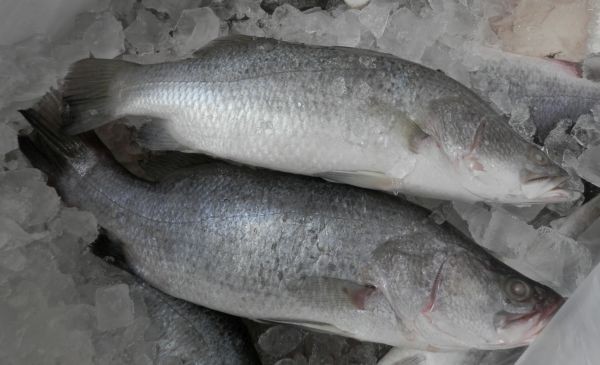
🐟 NT Barramundi
Iconic, Versatile and Packed with Flavour
Humpty Doo barramundi from the Northern Territory is one of Australia’s most iconic fish.
Known for its firm texture, mild flavour and golden skin, NT barramundi is a favourite among chefs and home cooks alike.
From the waters of the Top End, it’s a true taste of northern Australia.
Clean, sustainable and full of character.
Effie’s stocks whole premium NT barramundi almost always.
The same with cutlets and fillets, ready to pan-fry, bake or grill to perfection.
🍽️ Taste & Texture
- Flavour: Mild, slightly sweet, with a clean finish
- Texture: Firm yet flaky, with golden skin that crisps beautifully
- Nutrition: High in protein, rich in omega-3s, low in fat and sodium
Barramundi is a healthy, adaptable fish that suits a wide range of cooking styles.
👨🍳 How to Cook It
NT barramundi is best cooked with the skin on to preserve moisture and add texture.
Here are a few standout ways to enjoy it:
- Crispy Skin Barramundi: Pan-fried with salt and olive oil, served with citrus salad
- Barramundi Curry: Simmered in coconut milk with lemongrass and ginger
- Grilled Fillets: Cooked over flame and finished with lime and herbs
- Baked Barramundi: Wrapped in foil with garlic, lemon and seasonal vegetables
- Barramundi Tacos: Served with slaw, avocado and smoky paprika
Tip: Don’t overcook—barramundi is best when just opaque and still juicy.
✅ Final Word
NT barramundi offers a clean, versatile taste of Australia’s tropical north.
Whether you’re cooking for comfort or plating up something refined, this iconic fish brings flavour, texture and Top End pride to every dish.
WA Black Bream (out of stock)

🐟 WA Black Bream
Estuary-Fresh, Mild and Locally Loved
Black bream is a true local favourite across Western Australia’s southern rivers and estuaries. Known for its mild flavour and firm texture, this estuary-dwelling fish is ideal for pan-frying, baking or grilling.
It’s caught in clean, brackish waters from the Murchison River to the south coast, and is especially popular in the Swan, Blackwood and Warren River systems.
Effie’s stocks fresh WA black bream fillets often in season. Locally sourced and ready to cook.
🌊 Estuary Grown, Naturally Sustainable
Black bream complete their entire lifecycle within estuaries, rarely venturing into the open ocean. They thrive in salt-tolerant environments and are often found near snags, jetties and submerged timber.
Each river system supports its own distinct population, making black bream a truly local catch.
Harvested under sustainable guidelines, they’re a responsible choice for WA seafood lovers.
🍽️ Taste & Texture
- Flavour: Mild, slightly sweet, with a clean finish
- Texture: Firm and flaky, ideal for pan or oven cooking
- Nutrition: High in protein, low in fat, rich in B12 and selenium
Black bream is a lean, versatile fish that suits both simple and refined preparations.
👨🍳 How to Cook It
Black bream fillets are best cooked skin-on to retain moisture and add texture. Here are a few delicious ways to enjoy them:
- Pan-Fried Bream: Crisped in butter with lemon and herbs
- Baked Bream: Wrapped in foil with garlic, tomato and olives
- Grilled Fillets: Cooked over flame and served with citrus salad
- Bream Tacos: Flaked and folded into soft tortillas with slaw and lime
- Bream Curry: Simmered in coconut milk with ginger and coriander
Tip: Black bream cooks quickly—remove from heat as soon as the flesh turns opaque and flakes easily.
✅ Final Word
WA black bream offers a clean, mild taste of the state’s southern waterways.
Whether you’re cooking for comfort or plating up something elegant, this estuary-grown favourite brings freshness, texture and local pride to every dish.
WA Frypan Snapper

🐟 WA Frypan Snapper (Panfry Bream)
Crisp skin, clean flavour, and perfect for the pan. Effie’s WA Frypan Snapper is a coastal favourite, known for its firm white flesh and mild, slightly nutty taste.
Caught in nearshore waters, it’s ideal for quick pan-frying—especially whole, where the skin crisps beautifully and the bones add depth.
-
✅ Best for: Whole pan-fry or light grill
-
🌿 Flavour notes: Mild, clean, with a subtle nutty finish
-
🔪 Prep tip: Score the skin and cook hot for a golden, crisp result
-
🐟 Sustainability: Locally sourced from WA inshore fisheries
Effie’s tip: Serve whole with garlic butter or citrus zest. It’s a no-fuss fish that rewards simple, confident cooking.
WA Goldband Snapper

🐟 WA Goldband Snapper
Firm, versatile, and always reliable. Effie’s Goldband Snapper is caught off WA’s northern coast. It’s known for its mild flavour and firm white flesh. Great for grilling, baking, or pan-frying.
✅ Best for: Fillets, cutlets, or whole roast
🌿 Flavour notes: Mild, clean, slightly sweet
🔪 Prep tip: Holds shape well. Ideal for bold sauces or spice rubs.
🐟 Sustainability: Line-caught from managed WA fisheries
Effie’s tip: Try it with garlic, lemon, and a splash of olive oil. It’s a dependable all-rounder that suits any kitchen.
Malaysian Golden Pomfret

🐟 Malaysian Golden Pomfret
Mild, Delicate and Ready to Shine
Golden pomfret is a popular table fish across Southeast Asia, prized for its soft texture, clean flavour and elegant presentation.
Sourced from Malaysian coastal farms and fisheries, this pomfret is mild-flavoured and easy to cook whole.
Perfect for pan-frying, steaming or grilling with bold sauces and fresh herbs.
Effie’s stocks whole Malaysian golden pomfret almost always, fresh and ready for your next seafood dish.
🌊 Sourced from Malaysian Waters
Golden pomfret is typically farmed or wild-caught in warm, tropical waters off Malaysia’s west coast. It’s a fast-growing, salt-tolerant species that thrives in clean, brackish environments.
Malaysian producers focus on freshness and quality, with many pomfrets raised in lake or estuary systems using low-impact methods.
This fish is widely enjoyed across Asia for its gentle flavour and smooth texture, especially in Chinese, Malay and Thai cuisines.
🍽️ Taste & Texture
- Flavour: Mild, slightly sweet, with a clean finish
- Texture: Soft and delicate, with fine flakes
- Nutrition: Low in fat, high in protein, rich in omega-3s
Golden pomfret is ideal for light meals and flavourful sauces. It absorbs aromatics beautifully.
👨🍳 How to Cook It
This fish is best cooked whole, with minimal prep. Here are a few standout ways to enjoy it:
- Pan-Fried Pomfret: Crisped in oil and served with soy, ginger and spring onion
- Steamed Pomfret: Cooked with garlic, sesame oil and coriander
- Grilled Pomfret: Marinated in turmeric and lime, then charred over flame
- Pomfret Curry: Simmered in coconut milk with chilli and lemongrass
- Pomfret Rice Bowl: Flaked and served over jasmine rice with pickled vegetables
Tip: Score the skin before cooking to help the fish cook evenly and absorb flavour.
✅ Final Word
Malaysian golden pomfret offers a mild, elegant taste of Southeast Asia. Whether you’re cooking for comfort or plating up something refined, this versatile whole fish brings flavour, texture and international flair to every dish.
Malaysian Milkfish
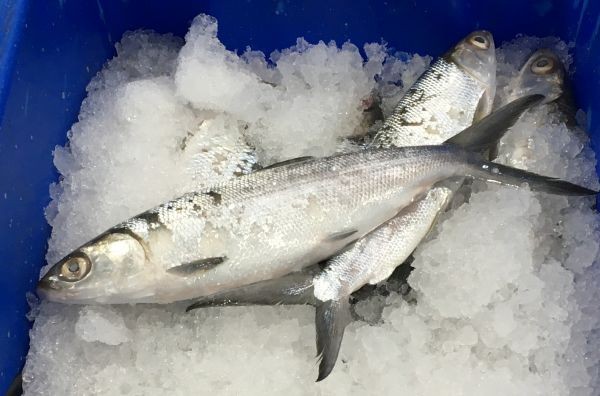
🐟 Malaysian Milkfish
Firm, Mild and Gaining Popularity
Milkfish is a silvery, tropical fish known for its firm texture and gentle flavour.
Popular across Southeast Asia, it’s now gaining traction in Malaysia thanks to expanding aquaculture and rising demand.
Often called bandeng in Indonesia or bangus in the Philippines, milkfish is prized for its versatility and nutrient-rich profile.
Effie’s stocks whole Malaysian milkfish most of the time, fresh and ready to cook.
🌊 Sourced from Malaysian Farms
Milkfish farming is growing rapidly in Malaysia, especially in coastal regions like Kelantan, Terengganu and Kedah.
It’s a salt-tolerant species that thrives in warm, brackish waters and is easier to farm than many other marine fish.
Local producers are improving broodstock quality and expanding supply to meet domestic demand.
Milkfish is typically raised in estuary systems using low-impact methods, making it a sustainable choice for everyday cooking.
🍽️ Taste & Texture
- Flavour: Mild, slightly sweet, with a clean finish
- Texture: Firm and meaty, with a gelatin-rich belly
- Nutrition: High in protein, rich in omega-3s and B vitamins
Milkfish is especially valued for its belly, which adds richness to soups and grilled dishes.
👨🍳 How to Cook It
This fish is best cooked whole or butterflied. Here are a few standout ways to enjoy it:
- Grilled Milkfish: Stuffed with herbs and charred over flame
- Milkfish Soup: Simmered with ginger, garlic and leafy greens
- Fried Milkfish: Crisped in oil and served with vinegar dipping sauce
- Milkfish Rice Bowl: Flaked and served over rice with pickled vegetables
- Milkfish Curry: Cooked in coconut milk with chilli and turmeric
Tip: Milkfish has fine bones. Ask Effie’s staff to butterfly or debone it for easier prep.
✅ Final Word
Malaysian milkfish offers a mild, meaty taste of Southeast Asia.
Whether you’re grilling, simmering or frying, this versatile whole fish brings flavour, nutrition and growing local appeal to every dish.
WA Mullet - (out of stock)
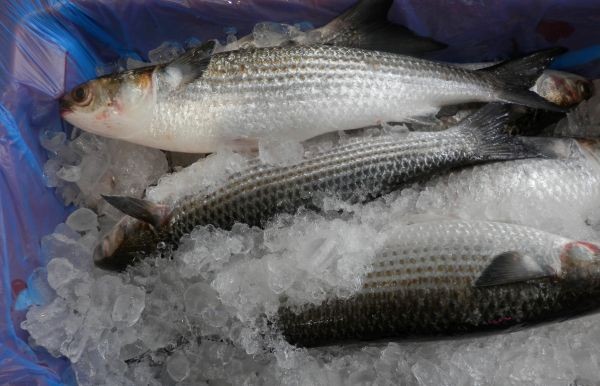
🐟 WA Mullet
Estuary-Fresh, Oily and Full of Flavour
WA mullet is a bold-flavoured, nutrient-rich fish caught in rivers, estuaries and sheltered coastal zones across the state’s south and southwest. Smaller and softer than ocean mullet, this estuary-grown species is prized for its juicy flesh and smoky potential. It’s a favourite among locals for grilling, baking and hot-smoking.
Effie’s stocks whole WA mullet, fresh and ready to cook.
🌊 River and Estuary Harvest
Mullet is harvested from systems like the Swan River, Peel-Harvey Estuary and Wilson Inlet. These fish thrive in brackish, silty waters and feed on algae, detritus and small invertebrates. WA’s estuarine mullet fishery is managed under strict sustainability guidelines, with seasonal closures and gear limits to protect breeding stocks.
Fishers use low-impact nets and are present at harvest, allowing any non-target species to be released alive.
🍽️ Taste & Texture
- Flavour: Medium to strong, slightly oily, with a clean finish
- Texture: Soft and juicy, best cooked whole or smoked
- Nutrition: High in omega-3s, protein and B vitamins
Estuary mullet is ideal for bold flavours and smoky preparations. It stays moist and flakes easily.
👨🍳 How to Cook It
This fish is best cooked whole, with skin on. Here are a few standout ways to enjoy it:
- Hot-Smoked Mullet: Brined and smoked over hardwood for rich flavour
- Grilled Mullet: Cooked over flame with lemon, garlic and herbs
- Baked Mullet: Roasted whole with tomato, olives and basil
- Mullet Salad: Flaked and served cold with pickled onions and rocket
- Mullet Toasts: Served on rye with mustard and fresh dill
Tip: For best results, use very fresh mullet with clear eyes, firm flesh and bright red gills.
✅ Final Word
WA mullet offers a bold, juicy taste of the state’s estuaries and rivers. Whether you’re smoking, grilling or baking, this sustainable whole fish brings flavour, nutrition and local character to every dish.
WA Red Emperor (out of stock)

🐟 WA Red Emperor
Premium, Meaty and Reef-Caught
WA red emperor is one of the state’s most prized reef fish. Known for its firm texture, mild flavour and striking red scales.
Caught in the tropical waters off the Pilbara and Kimberley, this long-lived species is a favourite among chefs and recreational fishers alike. It’s ideal for grilling, baking or steaming whole, and holds up beautifully to bold flavours.
Effie’s stocks whole WA red emperor regularly, fresh and ready to cook.
🌊 Northern Reefs and Sustainable Harvest
Red emperor is harvested from offshore reefs using low-impact line and trap methods. WA fisheries manage this species under strict quotas and monitoring programs to ensure long-term sustainability. Stocks are currently classified as healthy and stable across most regions.
However, some areas—such as Shoalwater and parts of the west coast bioregion—are under heavy restrictions due to localised depletion and slow recovery rates. These protections help safeguard breeding stocks and ensure the species remains available for future generations.
Red emperor thrive in deep reef habitats and feed on crustaceans, molluscs and smaller fish. Their firm flesh and clean flavour make them ideal for whole-fish cooking.
🍽️ Taste & Texture
- Flavour: Mild, slightly sweet, with a clean finish
- Texture: Firm and meaty, holds shape well when cooked
- Nutrition: High in protein, low in fat, rich in selenium and B vitamins
Red emperor is versatile and well-suited to both simple and refined preparations.
👨🍳 How to Cook It
This fish is best cooked whole, with skin on. Here are a few standout ways to enjoy it:
- Grilled Red Emperor: Cooked over flame with garlic, chilli and lime
- Baked Red Emperor: Stuffed with herbs and citrus, wrapped in foil
- Red Emperor Curry: Simmered in coconut milk with turmeric and ginger
- Red Emperor Rice Bowl: Flaked and served over rice with pickled vegetables
- Red Emperor Salad: Served cold with citrus, rocket and sesame dressing
Tip: Score the skin before cooking to help the fish cook evenly and absorb flavour.
✅ Final Word
WA red emperor offers a premium, meaty taste of the northern reef coast.
Whether you’re grilling, baking or simmering, this sustainable whole fish brings flavour, texture and Western Australian pride to every dish.
WA Red Spot Emperor

🐟 Meet WA Red Spot Emperor: A Local Gem from Western Waters
If you’re looking to add a splash of Western Australian flavour to your dinner plate, let us introduce you to a true coastal treasure: the WA Red Spot Emperor.
Known for its vibrant appearance and deliciously mild taste, this fish is a favourite among local chefs and home cooks alike—and yes, you can find it right here at Effie’s Gourmet Chicken in Morley WA!
🌊 What Is Red Spot Emperor?
Red Spot Emperor (Lethrinus lentjan) is a reef-dwelling fish found in the warm waters off WA’s northern coast. It’s easily recognised by the reddish spot near its gill cover and its sleek, silvery body with hints of pink and gold. It’s part of the emperor family, which includes other tasty reef fish like Spangled Emperor and Longnose Emperor.
These fish are typically caught in shallow coral reef areas, making them a sustainable choice when sourced responsibly. WA’s fisheries are known for their strong management practices, so when you buy local Red Spot Emperor, you’re supporting both the environment and hardworking Aussie fishers.
🍽️ Taste and Texture
Red Spot Emperor is a winner in the kitchen. Its flesh is white, firm, and slightly sweet—perfect for grilling, baking, or pan-frying. It holds together beautifully, making it ideal for whole fish presentations or fillets. Whether you’re throwing it on the barbie with a squeeze of lemon or baking it with garlic and herbs, it’s a versatile fish that plays well with bold flavours and gentle seasonings alike.
Not sure how to cook it? Ask the friendly team at Effie’s We’re always happy to share tips!
👩🍳 Cooking Ideas
Here are a few easy ways to enjoy Red Spot Emperor:
Grilled Whole: Stuff with lemon slices, garlic, and parsley, then wrap in foil and grill until tender.
Pan-Fried Fillets: Lightly dust with flour, season with salt and pepper, and fry in olive oil until golden.
Asian-Inspired Steamed Fish: Steam with ginger, soy sauce, and spring onions for a fragrant, healthy dish.
Fish Tacos: Flake cooked fillets into soft tortillas with slaw and spicy mayo for a fun twist.
It’s a great fish for both weeknight meals and weekend feasts.
🛒 Where to Buy
You don’t need to go far to get your hands on this delicious catch. WA Red Spot Emperor is available at Effie’s Gourmet Chicken in Morley WA. Yes, we do more than just chicken! We’re proud to offer a selection of fresh, locally sourced seafood that celebrates the best of WA’s coastline.
Our fish is delivered market-fresh, and we’re picky about quality. So, when you pick up Red Spot Emperor from Effie’s, you’re getting top-notch seafood that’s ready to impress.
❤️ Why Locals Love It
WA Red Spot Emperor is a bit of a quiet achiever. It’s not as flashy as some of the big-name fish, but once you’ve tasted it, you’ll understand why it’s a staple in many WA kitchens. It’s affordable, sustainable, and delicious.
So next time you’re in Morley, swing by Effie’s and grab some Red Spot Emperor. Your taste buds will thank you.
WA Silver Trevally (out of stock)

🐟 WA Silver Trevally
The underrated all-rounder. Effie’s Silver Trevally is often overlooked—but not by WA locals. It’s got firm flesh, a bold flavour, and takes well to just about any prep.
Grill it, fry it, curry it. It’s a workhorse fish with plenty of character.
✅ Best for: Curry, grill, pan-fry, or smoking
🌿 Flavour notes: Bold, savoury, slightly oily
🔥 Prep tip: Handles strong flavours. Try tamarind, chilli, or smoky spice blends.
🐟 Sustainability: Wild-caught from WA nearshore waters
Effie’s tip: Don’t underestimate it. Silver Trevally shines in spicy dishes and smoky grills. Great value, great flavour.
WA Spotted Cod

🐟 WA Spotted Cod
Soft texture. Subtle flavour. Easy to pair. Effie’s Spotted Cod is a gentle fish with pale, tender flesh. It’s ideal for light meals and delicate flavours.
Think butter, herbs, and citrus. Or go creamy with leek, potato, or white wine sauce.
- ✅ Best for: Steaming, poaching, or gentle pan-fry
- 🌿 Flavour notes: Mild, slightly sweet, very tender
- 🍋 Pairings: Dill, parsley, lemon, white wine, soft vegetables
- 🐟 Sustainability: Responsibly caught from WA shelf waters
Effie’s tip: Steam with lemon and dill. Serve with buttery potatoes or a light broth.
WA Threadfin Bream

🐟 WA Threadfin Bream
Delicate, Mild and Locally Caught
WA threadfin bream is a slender, reef-dwelling fish known for its soft texture, mild flavour and elegant presentation.
Caught in northern waters off the Pilbara and Gascoyne coast, it’s a popular species for whole-fish cooking and Southeast Asian-style dishes.
With its pinkish skin and fine scales, it is a favourite among chefs and home cooks alike.
Effie’s stocks whole WA threadfin bream, fresh and ready to cook.
🌊 Northern Reefs and Low-Impact Harvest
Threadfin bream are caught using low-impact line and trap methods in offshore reef habitats.
WA fisheries manage this species under regional quotas and monitoring programs to ensure long-term sustainability.
Stocks are considered healthy, and the fishery has minimal bycatch and habitat disturbance.
These fish feed on small crustaceans and benthic organisms and are often found alongside other tropical reef species like emperor and snapper.
🍽️ Taste & Texture
- Flavour: Mild, slightly sweet, with a clean finish
- Texture: Soft and delicate, best cooked gently
- Nutrition: Low in fat, high in protein, rich in B vitamins and selenium
Threadfin bream is ideal for steaming, baking or pan-frying. It pairs well with citrus, herbs and light sauces.
👨🍳 How to Cook It
This fish is best cooked whole, with skin on. Here are a few standout ways to enjoy it:
- Steamed Bream: Cooked with ginger, soy and spring onion
- Baked Bream: Stuffed with herbs and citrus, wrapped in foil
- Pan-Fried Bream: Crisped in oil and served with garlic and lime
- Bream Curry: Simmered in coconut milk with turmeric and chilli
- Bream Rice Bowl: Flaked and served over jasmine rice with pickled vegetables
Tip: Score the skin before cooking to help the fish cook evenly and absorb flavour.
✅ Final Word
WA threadfin bream offers a mild, elegant taste of the northern reef coast. Whether you’re steaming, baking or pan-frying, this sustainable whole fish brings flavour, texture and regional character to every dish.
Malaysian Tilapia

🐟 Malaysian Tilapia
Freshwater-Farmed, Mild and Reliable
Malaysian tilapia is a clean-flavoured, fast-growing freshwater fish raised in ponds, lakes and rivers across the country.
Known for its mild taste and firm texture, tilapia is a staple in Southeast Asian cooking and a versatile option for whole-fish meals.
It’s especially popular for grilling, steaming and pan-frying with bold sauces and aromatics.
Effie’s stocks whole Malaysian tilapia regularly, fresh and ready to cook.
🌊 Sourced from Malaysian Farms
Tilapia farming is widespread in Malaysia, with producers operating in states like Perak, Selangor and Johor.
The fish are raised in freshwater ponds and cage systems using low-impact methods.
Malaysian tilapia is known for its consistent quality, clean flavour and year-round availability.
Tilapia is a hardy species that thrives in warm water and feeds on plant-based diets, making it a sustainable and efficient choice for everyday cooking.
🍽️ Taste & Texture
- Flavour: Mild, slightly sweet, with a clean finish
- Texture: Firm and lean, holds shape well when cooked
- Nutrition: High in protein, low in fat, rich in B vitamins and selenium
Tilapia is ideal for light meals and bold sauces. It absorbs flavour beautifully and cooks quickly.
👨🍳 How to Cook It
This fish is best cooked whole, with skin on. Here are a few standout ways to enjoy it:
- Grilled Tilapia: Marinated in turmeric and lime, then charred over flame
- Steamed Tilapia: Cooked with ginger, soy and spring onion
- Pan-Fried Tilapia: Crisped in oil and served with garlic and chilli
- Tilapia Curry: Simmered in coconut milk with lemongrass and galangal
- Tilapia Rice Bowl: Flaked and served over jasmine rice with pickled vegetables
Tip: Score the skin before cooking to help the fish cook evenly and absorb flavour.
✅ Final Word
Malaysian tilapia offers a mild, reliable taste of Southeast Asia’s freshwater farms. Whether you’re grilling, steaming or pan-frying, this sustainable whole fish brings flavour, nutrition and everyday versatility to every dish.
WA Tropical Snapper (out of stock)

🐟 WA Tropical Snapper
Bright waters. Soft flesh. A northern gem. Effie’s Tropical Snapper comes from warm WA currents. Its flesh is pale and tender. Its flavour is light, with a whisper of sweetness.
It’s a fish for quiet meals. For gentle cooking. For letting the sea speak softly.
- ✅ Best for: Steaming, baking, or light pan-fry
- 🌿 Flavour notes: Mild, sweet, delicate
- 🍃 Prep tip: Use soft herbs, citrus, and a light hand
- 🐟 Sustainability: Wild-caught from WA tropical fisheries
Effie’s tip: Steam with lemongrass and lime. Serve with jasmine rice and a smile.
WA Cobbler (out of stock)

🐟 WA Cobbler
Estuary-Grown, Mild and Uniquely Local
WA cobbler is a true estuarine specialist. Slow-growing, locally distinct and highly prized for its mild flavour and tender texture.
Found in southern river systems like Wilson Inlet, the Blackwood River and the Leschenault Estuary, cobbler is a favourite among locals and chefs who appreciate its clean taste and versatility.
Effie’s stocks fresh WA cobbler fillets in season, responsibly harvested and ready to cook.
🌊 A Fish with Local Character
Also known as estuary catfish, cobbler is endemic to Australia and thrives in sheltered, silty estuaries.
It nests in burrows beneath seagrass and forages at night, feeding on molluscs, crustaceans and organic debris.
Each WA estuary hosts its own genetically distinct cobbler population, making this fish a truly local catch.
Harvested under strict sustainability guidelines, cobbler is protected in some regions and managed carefully to preserve breeding stocks.
🍽️ Taste & Texture
- Flavour: Mild, slightly sweet, with a clean finish
- Texture: Tender and delicate, with fine flakes
- Nutrition: High in protein, low in fat, rich in B12 and selenium
Cobbler is a gentle, versatile fish that suits both simple and refined preparations.
👨🍳 How to Cook It
WA cobbler fillets are best cooked gently to preserve their delicate texture. Here are a few delicious ways to enjoy them:
- Pan-Fried Cobbler: Lightly floured and crisped in butter with lemon
- Baked Cobbler: Wrapped in foil with herbs, garlic and white wine
- Cobbler Curry: Simmered in coconut milk with turmeric and ginger
- Cobbler Tacos: Flaked and served with slaw, avocado and lime
- Cobbler Chowder: Folded into a creamy soup with potatoes and corn
Tip: Handle fillets gently—cobbler is soft and best cooked just until opaque.
✅ Final Word
WA cobbler offers a mild, estuary-fresh taste of the southern coast. Whether you’re cooking for comfort or plating up something elegant, this uniquely local fish brings flavour, texture and Western Australian pride to every dish.
WA Herring (out of stock)

🐟 WA Herring
Small, Speedy and Full of Local Character
WA herring is a staple of southern coastal fishing. Fast-moving, great-tasting and perfect for casual meals or gourmet snacks.
Caught inshore from Shark Bay to Albany, these schooling fish are known for their clean flavour, golden spots and acrobatic fight on the line.
Effie’s stocks whole WA herring, fresh and ready to cook or grill.
🌊 Southern Waters, Sustainable Catch
Australian herring (Arripis georgianus) are found along WA’s lower west and south coasts, especially near jetties, reefs and estuaries.
They’re often confused with juvenile salmon but can be identified by their large eyes and black-tipped tails.
WA herring are managed under strict recreational and commercial limits, with seasonal protections to support spawning and long-term sustainability.
🍽️ Taste & Texture
- Flavour: Mild, slightly oily, with a clean finish
- Texture: Soft and flaky, ideal for quick cooking
- Nutrition: High in protein, rich in omega-3s and B vitamins
Herring is great for light meals, snacks or bold flavours. It pairs well with smoke, spice and citrus.
👨🍳 How to Cook It
WA herring is best cooked whole or butterflied. Here are a few delicious ways to enjoy it:
- Grilled Herring: Cooked over flame with lemon and cracked pepper
- Pan-Fried Herring: Dusted in flour and crisped in oil with parsley
- Pickled Herring: Marinated in vinegar, onion and spices
- Smoked Herring: Cold-smoked for bold flavour and shelf life
- Herring Toasts: Flaked and served on rye with mustard and dill
Tip: Remove the backbone after cooking for easy flaking and serving.
✅ Final Word
WA herring offers a quick, tasty taste of the southern coast. Whether you’re grilling on the beach or prepping a snack at home, this small fish brings flavour, versatility and local pride to every plate.
WA Pink Snapper (out of stock)

🐟 WA Pink Snapper
A WA classic with broad appeal. Pink Snapper is one of Western Australia’s most recognised table fish. Locally caught and widely loved, it’s known for its firm texture and balanced flavour.
Effie’s Pink Snapper works beautifully whole or filleted. It holds up to bold seasoning but also shines with simple prep.
- ✅ Best for: Roasting whole, filleting, or cutlets
- 🌿 Flavour notes: Mild, savoury, slightly sweet
- 🔥 Prep tip: Great with herbs, citrus, or smoky spice blends
- 🐟 Sustainability: Wild-caught under WA’s strict quotas
Effie’s tip: Roast whole with fennel and lemon. Or pan-fry fillets with a crisp skin and light salsa.
VIC Rainbow Trout - (out of stock)

🐟 VIC Rainbow Trout
Freshwater-Farmed, Mild and Versatile
Rainbow trout is a popular freshwater species across Victoria, known for its clean flavour, soft texture and striking colour.
Originally introduced from North America, it now thrives in cool lakes, rivers and hatcheries throughout the state.
With its pink stripe and speckled skin, rainbow trout is as visually appealing as it is delicious.
Effie’s stocks whole VIC rainbow trout regularly, fresh and ready to cook.
🌊 Cool Waters and Responsible Farming
Rainbow trout are farmed and stocked in lakes and reservoirs across Victoria, including Lake Purrumbete, Lake Bullen Merri and Hepburn Lagoon.
They prefer cool, well-oxygenated water and are typically raised in clean, low-impact systems.
Fisheries Victoria manages regular stocking programs to support recreational fishing and maintain healthy populations.
Most rainbow trout sold commercially are farm-raised, offering consistent quality and year-round availability.
🍽️ Taste & Texture
- Flavour: Mild, slightly sweet, with a clean finish
- Texture: Soft and flaky, with a delicate bite
- Nutrition: High in protein, rich in omega-3s and B vitamins
Rainbow trout is ideal for gentle cooking methods and pairs well with herbs, citrus and buttery sauces.
👨🍳 How to Cook It
This fish is best cooked whole, with skin on. Here are a few standout ways to enjoy it:
- Pan-Fried Trout: Crisped in butter with lemon and parsley
- Baked Trout: Stuffed with dill, garlic and citrus, wrapped in foil
- Smoked Trout: Hot-smoked and served with horseradish cream
- Trout Salad: Flaked and served cold with rocket and pickled onions
- Trout Toasts: Served on sourdough with crème fraîche and chives
Tip: Rainbow trout cooks quickly. Remove from heat as soon as the flesh turns opaque and flakes easily.
✅ Final Word
VIC rainbow trout offers a mild, elegant taste of Australia’s cool freshwater lakes.
Whether you’re pan-frying, baking or smoking, this versatile whole fish brings flavour, nutrition and regional character to every dish.
WA Scad

🐟 WA Scad
Lean, Versatile and Sustainably Caught
WA scad is a small, fast-swimming fish found along the state’s west and north coasts.
Recognised by its silvery body and yellow tail, scad is a popular catch for recreational fishers and a versatile option for everyday cooking.
It’s often enjoyed grilled, fried or smoked, and pairs well with bold flavours.
Effie’s stocks whole WA scad, fresh and ready to cook.
🌊 Wild-Caught and Sustainable
Scad is harvested in coastal bays like King George Sound and Cockburn Sound, often as part of WA’s low-impact purse seine fishery.
Catches are modest and carefully managed, with scad making up a small portion of the total harvest.
Stock levels are healthy, and ecological risk assessments rate the fishery as low impact.
Scad are schooling fish that feed on plankton and small crustaceans.
They’re fast-growing and resilient, making them a sustainable choice for WA seafood lovers.
🍽️ Taste & Texture
- Flavour: Mild to medium, slightly oily, with a clean finish
- Texture: Firm and lean, holds shape well when cooked
- Nutrition: High in protein, rich in omega-3s and B vitamins
Scad is ideal for grilling, frying or smoking. It absorbs marinades well and stays juicy.
👨🍳 How to Cook It
This fish is best cooked whole or butterflied. Here are a few standout ways to enjoy it:
- Grilled Scad: Cooked over flame with garlic, chilli and lime
- Pan-Fried Scad: Crisped in oil and served with soy and ginger
- Smoked Scad: Brined and hot-smoked for bold flavour
- Scad Rice Bowl: Flaked and served over rice with pickled vegetables
- Scad Salad: Served cold with citrus, herbs and rocket
Tip: Score the skin before cooking to help the fish cook evenly and absorb flavour.
✅ Final Word
WA scad offers a lean, flavourful taste of the coastal shelf.
Whether you’re grilling, smoking or frying, this sustainable whole fish brings texture, nutrition and local character to every dish.
WA Saddletail Snapper (out of stock)
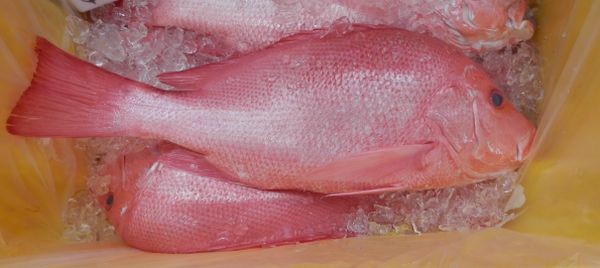
🐟 WA Saddletail Snapper
Bold flavour. Built for the pan. Effie’s Saddletail Snapper is a northern WA favourite. It’s got firm flesh and a richer taste than Goldband or Pink.
Best cooked hot and fast. Pan-fried fillets or whole fish with crisp skin and bold seasoning.
- ✅ Best for: Pan-fry, grill, or spicy roast
- 🌿 Flavour notes: Rich, savoury, slightly earthy
- 🔥 Prep tip: Handles spice well. Try paprika, garlic, or chilli rubs.
- 🐟 Sustainability: Wild-caught from WA’s tropical fisheries
Effie’s tip: Go bold. Saddletail loves heat and flavour. Serve with lime, herbs, and a crunchy salad.
WA Robinson Bream
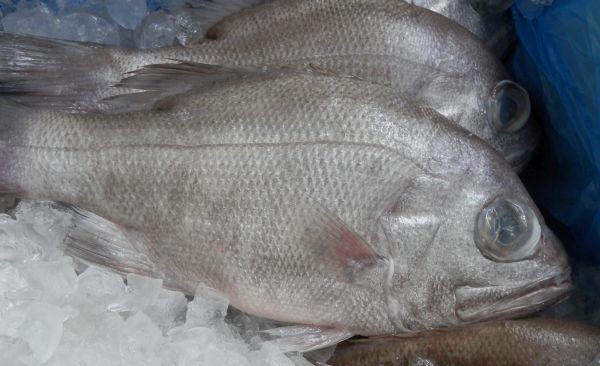
🐟 WA Robinson Bream
Clean flavour. Easy to cook. Effie’s Robinson Bream is a classic WA inshore fish with mild flesh and a gentle sweetness that suits simple, honest cooking.
Best cooked hot and quick. Fillets stay tender in the pan, and whole fish roasts beautifully with crisp skin and light seasoning.
- ✅ Best for: Pan‑fry, light grill, or simple oven roast • 🌿 Flavour notes: Mild, slightly sweet, clean • 🔥 Prep tip: Keep it simple. Salt, pepper, lemon, and a touch of garlic do the job. • 🐟 Sustainability: Wild‑caught from WA’s coastal fisheries
Effie’s tip: Don’t overthink it. Robinson Bream shines with fresh herbs, lemon, and a quick cook.
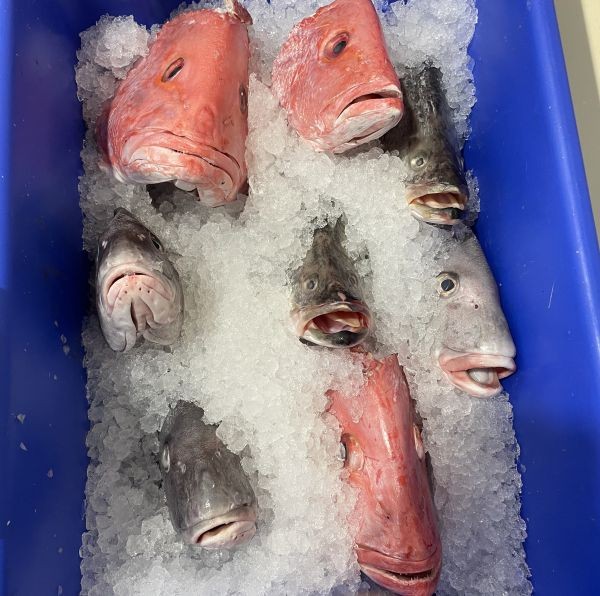
Fish Heads, Tails and Fish Wings. Usually available.
From the early morning fish market to you.
(WHILE STOCKS LAST)
We will also fillet many of the whole fish we have in stock for you.
*Fish cleaning/filleting hours are 9:00 am – 5:00 pm daily. * Filleting/skinning free. No tiny fish like Sardines or Scaly are cleaned.
Fish “cleaning” (the removal of organs, heads, gills etc.) is not available for quite small fish such as Sardines, Bony Herring & Scaly for example.
Fish “washing” is carried out in accordance with the A&NZ Food Standards Code 4.2.1 ‘Primary Production and Processing Standard for Seafood’. It requires fish to be washed before filleting, skinning etc and for unprocessed fish to be washed before handing over to a customer.
